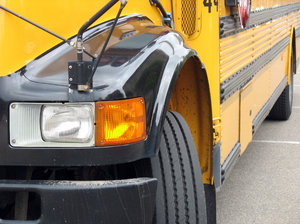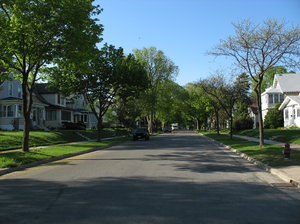Massachusetts passed the Move Over Law in March 2009 in an effort to prevent first responders and emergency rescuers from being hit by a passing vehicle. Motorists are required by law to move over to the next adjacent lane when they see flashing lights or an accident ahead.

Massachusetts car accident attorneys understand the dangers that police officers, paramedics, firefighters, tow truck drivers and other emergency responders face when they work the scene of an accident. So we remind motorists to give them a break by reducing your speed and moving over to avoid contact with them.
A recent car accident in the Canton/Westwood area sent a police officer to the hospital after being struck by a passing vehicle while he was helping a construction crane move along Route 128. The Milton Patch reports the police cruiser was in the right lane in front of the crane that was moving into position at a construction site. A second cruiser was also driving slowly behind the crane. The accident is under investigation but the preliminary report indicates the motorist passed the first cruiser and the crane but did not see the leading cruiser before cutting in front of the crane and striking the rear of the police car. The police trooper was transported to Milton Hospital but the seriousness of his injuries has yet to be released. No charges will be filed against the car operator until the investigation is complete.
This is one of many recent serious accidents involving police who have been struck by a passing vehicle in the last year. Last March, one state patrol officer suffered serious leg injuries after he was struck by a second vehicle after pulling over a traffic violator. A second officer was hit in Framingham last March when he was riding in his police cruiser. Over the summer, six state troopers in Massachusetts were seriously injured or killed in as many weeks after responding to an emergency situation.
CBS Boston reports that the law is clearly not working with the number of accidents involving emergency responders still occurring in our state. Whether it is blatant disregard of the law or motorists’ just not being aware of the law is still to be determined. A local garage in Attleboro connected to AAA towing service responds to an average of more than 1,000 calls per month. Tow truck drivers fear for their life because they continually see speeding motorists distracted by their cell phones or drinking coffee pass within a foot of where they are standing.
According to the Registry of Motor Vehicles, troopers issued more than 3,100 violations of the Move Over Law during its first year. In 2010, the violations issued were up to 4,263. State police officials claim they don’t have enough manpower to continue enforcing the Move Over law, which explains the drop in citations issued this year which stands at 2,285 from earlier this month.
Violators can face a penalty of up to $100 when they fail to move over. Motorists are reminded to use caution and stay alert for flashing emergency lights, especially when roadways are congested.
Continue reading
 Boston Car Accident Lawyer Blog
Boston Car Accident Lawyer Blog











